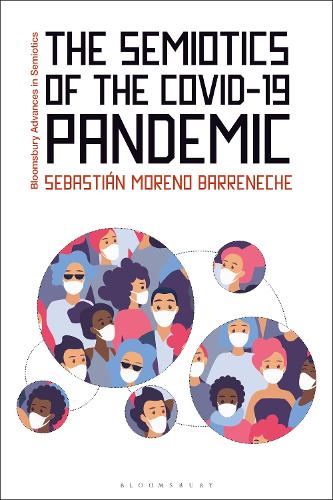
The Semiotics of the COVID-19 Pandemic
(Hardback)
Publishing Details
The Semiotics of the COVID-19 Pandemic
By (Author) Dr Sebastin Moreno Barreneche
Bloomsbury Publishing PLC
Bloomsbury Academic
12th December 2024
United Kingdom
Classifications
Tertiary Education
Non Fiction
Semantics, discourse analysis, stylistics
Communication studies
Social impact of disasters / accidents (natural or man-made)
362.196241440014
Physical Properties
Hardback
240
Width 156mm, Height 234mm
Description
Studying the discursive dimension of the COVID-19 pandemic from a semiotic perspective, this book uses semiotic theory to analyse the meaning-making mechanisms and dynamics that occurred during, and revolved around, the pandemic. Demonstrating the utility of semiotic theory to make sense of discursive phenomena like those triggered by the COVID-19 pandemic, it explores in detail: the blame-attribution discourses that emerged at the beginning of the pandemic how the coronavirus was brought to life in plastic and visual manifestations as a monster that poses a threat to humans how the collective actor the healthcare workers was constructed in discourse and axiologised in positive terms around the globe the semiotics of the body during the pandemic, with a focus on the face, facemasks, social distancing and the uses of the body in online videoconferences and the idea of a new normality following the pandemic. Examining in turn different dimensions of the COVID-19 pandemic, the book highlights the importance of its discursive and semiotic nature. To do so, it features examples from Europe, Latin America and the United States, including a wide range of images, texts, practices and objects.
Author Bio
Sebastin Moreno Barreneche is Associate Lecturer at the Faculty of Management and Social Sciences of Universidad ORT Uruguay, Uruguay, and an active researcher of Uruguays National Research System (SNI).
